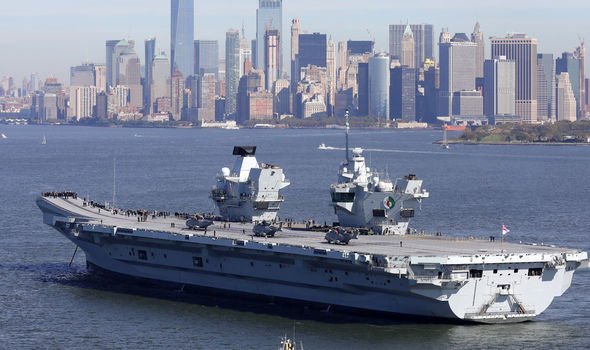China’s Navy to be ‘world’s largest in 10 years’

China is projected to have the world’s largest navy in the next 10 to 15 years, according to a United States-based military forum.
An article written for the United States Naval Institute (USNI) by retired US Navy Rear Admiral Michael McDevit declared that the US Navy remains a dominant naval force on the global stage – but China is fast catching up.
The article cited China’s current behavior in building up the blue water capability of its navy.
“It is difficult to appreciate just how fast China has been able to create a blue water navy. One way is to compare it to the other great navies of the world,” McDevit wrote.
At the pace Beijing is going, it may have the world’s largest naval power within 10 to 15 years, he said in the USNI’s latest monthly publication.
USNI is an Indiannapolis-based private, non-profit, professional military association that seeks to offer independent, nonpartisan forum for debate of national defense and security issues.
View from Phl ::
Meanwhile, a senior security official in the Philippines noted that alongside its ongoing naval buildup, China is already projecting naval dominance against smaller maritime nations within the Indo-Pacific region.
The security official, who used to head a military unit of the Armed Forces of the Philippines (AFP) directly engaged in the country’s maritime and territorial monitoring, admitted that China’s naval presence in the South China Sea appeared to be irreversible.
“China’s Navy, Coast Guard and maritime militia ships are almost all over the South China Sea. What is only keeping them from gobbling up the entire South China Sea is the constant presence of US Navy ships in the hotly disputed region,” the source told The STAR.
He said that while claimant-states to part of the Spratly Islands – including the Philippines, Malaysia and Vietnam – are determined to protect their respective occupied outposts in the South China Sea, all their forces combined will have no chance against China.
For now, he said what only keeps Beijing from enforcing its plan to totally dominate the entire South China Sea — from the territorial waters of Indonesia up to Taiwan Strait – is the US Navy’s regular Freedom of Navigation Operations (FONOPS) and overflights in the disputed region.
Late last month two USN research and survey ships – USN Victorious (T-AGOS 19) and USN Loyal (T-AGOS 22) – conducted joint operations in the South China Sea, particularly in the international waters located between Panatag Shoal and Hainan province of China.
China’s advantage ::
The Filipino security official’s view is shared by USNI, which stated that Chinese warships are homeported in East Asia, providing clear advantage over most of the US Navy anchored thousands of miles away.
“What this means in practice is that on a daily basis, virtually all of the Chinese navy is either in port in China or operating in home waters in and around the First Island Chain. This yields a significant firepower advantage over the US-Seventh Fleet,” McDevit wrote.
Naval inventory ::
McDevit wrote that by next year, the People’s Liberation Army-Navy (PLAN) is expected to have 131 blue water-capable warships to include two aircraft carriers, 36 aegis-like destroyers, 30 modern frigates, nine large amphibious warships, 10 combat logistics ships, eight nuclear-powered submarines, 30 diesel-electric attack submarines and six ballistic submarines.
For now, PLAN’s naval inventory is still a far cry from the USN’s inventory of 236 blue water capable warships including 11 aircraft carriers, 90 Aegis destroyers, 25 littoral combat ships, 34 amphibious warships, 30 combat logistic ships, 57 nuclear-power submarines and 14 ballistic missile submarines.
But China is also focusing on doubling the size of its submarine force. Beiing projected to commission into the service an average 1.5 nuclear attack submarines annually from 2021 to 2035.
McDevit said in terms of modern warships, China far outstrips any erstwhile competitors except for the USN.
Next to China’s naval might is Russia which has a total of 73 blue water capable surfaced and subsurface warships, followed by Japan with 44, United Kingdom with 39, India with 33 and France with 36, said USNI citing various sources.
Xi’s naval plan ::
But with Chinese President Xi Jinping’s plan of building a “world class force” – USNI said this is assessed based on how fast Beijing has built and commissioned 131 blue water-capable warships in a span of just 10 years – PLAN’s blue water capable surface and sub-surface warships will number around 270 in 2035.
China has also launched a measured approach in introducing carrier aviation in order to realize a viable carrier force. China is currently building a third carrier.
USNI reported the larger, catapult-equipped aircraft carrier is estimated to be considerably larger than the Liaoing— somewhere in the range of 85,000 tons.




